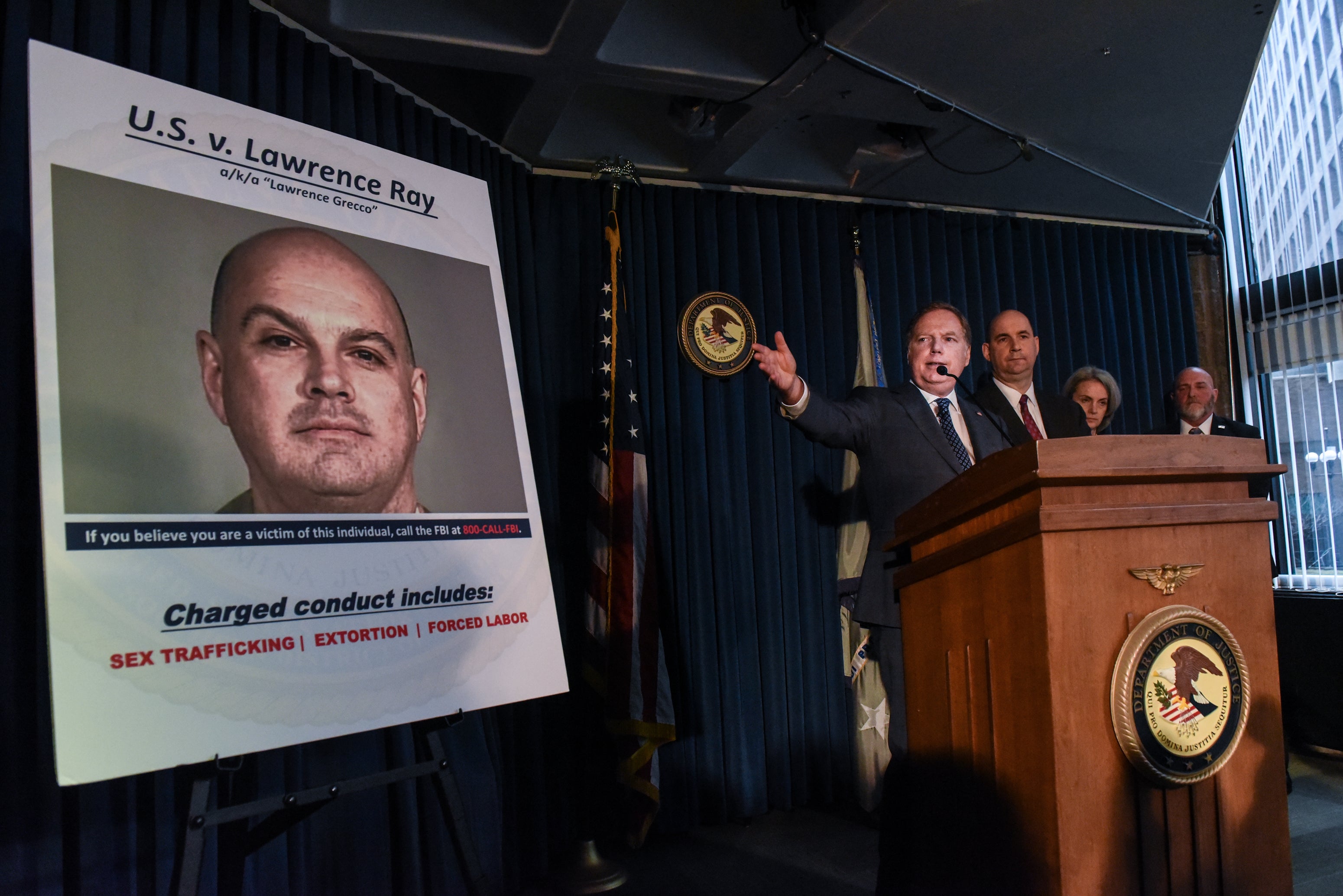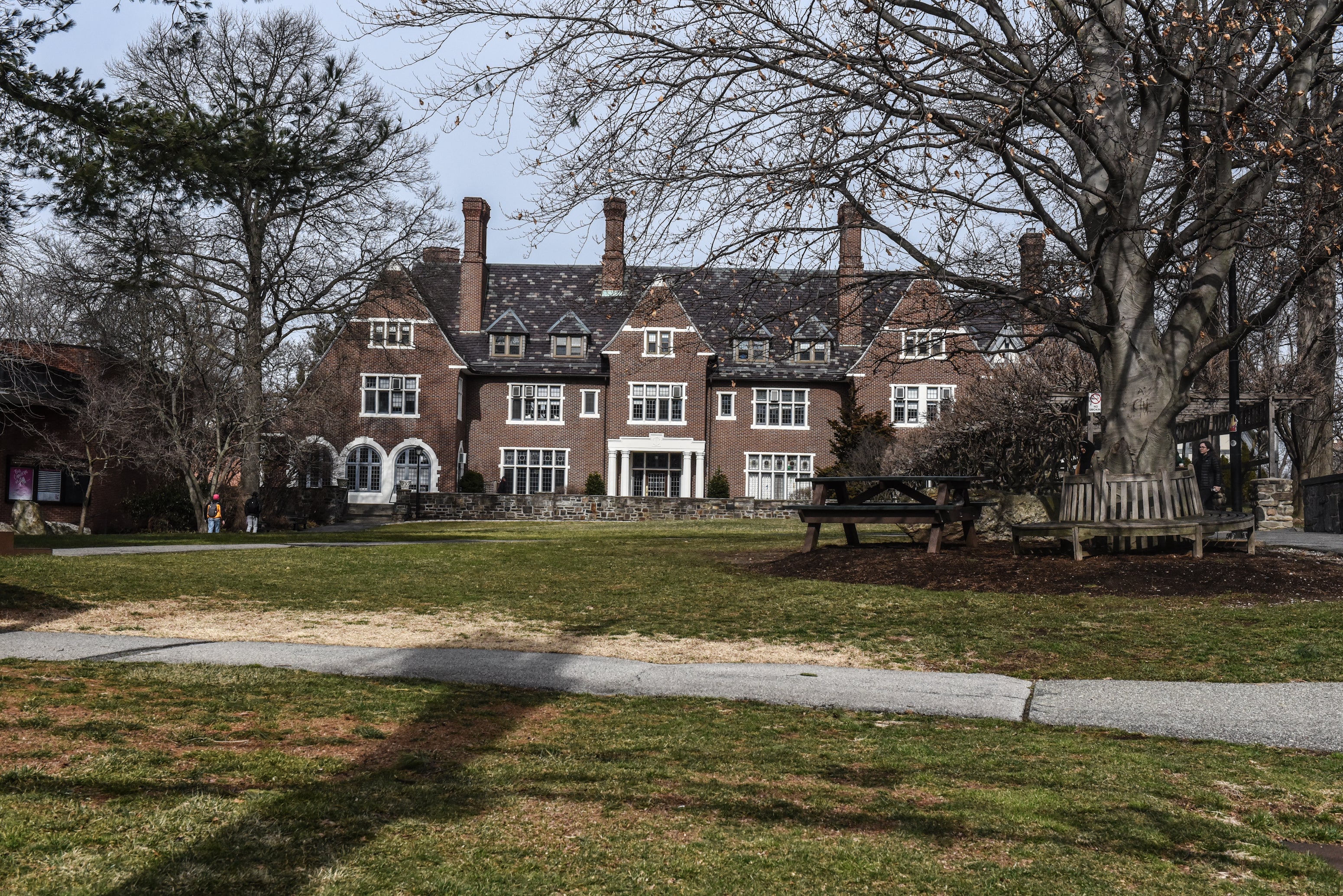A student’s father moved into a Sarah Lawrence dorm and started a cult. Now, survivors tell their stories
‘Stolen Youth: Inside the Cult at Sarah Lawrence’ looks at the case of Lawrence Ray, and the coercive control he deployed on his daughter’s friends. Clémence Michallon reports


Your support helps us to tell the story
From reproductive rights to climate change to Big Tech, The Independent is on the ground when the story is developing. Whether it's investigating the financials of Elon Musk's pro-Trump PAC or producing our latest documentary, 'The A Word', which shines a light on the American women fighting for reproductive rights, we know how important it is to parse out the facts from the messaging.
At such a critical moment in US history, we need reporters on the ground. Your donation allows us to keep sending journalists to speak to both sides of the story.
The Independent is trusted by Americans across the entire political spectrum. And unlike many other quality news outlets, we choose not to lock Americans out of our reporting and analysis with paywalls. We believe quality journalism should be available to everyone, paid for by those who can afford it.
Your support makes all the difference.Lawrence Ray moved into his daughter’s dorm at Sarah Lawrence in 2010. Larry, as he was known to those around him, had just got out of a New Jersey prison, where he had been spent six months on child custody charges. His daughter Talia, a student at the liberal arts college in Yonkers, New York, had talked him up to her friends. She brought up Lawrence often, describing him as a hero, “practically James Bond”, a former roommate says in a new Hulu documentary. When the time came for Larry to be released from prison, Talia told her roommates he would be moving in with them. The group was accepting and willing to help.
The rest of the saga is well known to true-crime followers. From Talia’s dorm at Sarah Lawrence, and later from another location in New Jersey, Ray weaved a powerful web of coercion, recruiting his daughter’s roommates and acquaintances into a cult of his own making. The story was first explored in a New York Magazine article published in 2019, with the headline: “The Stolen Kids of Sarah Lawrence – What happened to the group of bright college students who fell under the sway of a classmate’s father?”
After the piece’s publication, authorities began investigating Ray. He was indicted in 2020 and convicted two years later, in April 2022, of racketeering conspiracy, a violent crime in aid of racketeering, extortion, sex trafficking, forced labour, tax evasion, and money laundering offenses. In January of this year, Ray was sentenced to 60 years in prison.
The case captivated people, perhaps, due to its oddities: how does a student’s father move into a college dorm? How does he recruit her friends into a cult? How did he take over these young people’s minds and lives, and what were the repercussions? Stolen Youth: Inside the Cult at Sarah Lawrence, a new, three-part documentary on Hulu, answers all of these questions in careful detail. It’s an intelligent, empathetic deep dive into Ray’s crimes, featuring interviews with multiple survivors.
Director Zach Heinzerling, the Oscar-nominated documentarian behind the 2013 Cutie and the Boxer, first heard from Daniel Levin in late 2019. One of Ray’s victims, Levin was working on a memoir (Slonim Woods 9, published in September 2021 by Crown) and thought the story was worth developing into a documentary.
“Larry was all about manipulating the truth,” Heinzerling tells The Independent in a video call, a few days after the documentary’s release. He says there was a “real want” for a survivor-based telling of this story, reaching a “definitive, capital ‘t’ truth.”
From there, Heinzerling got in touch with other survivors and victims, “some of whom were still under Larry’s spell.” Covid delayed production somewhat, and in 2022, Ray’s trial began. Heinzerling worked on the documentary for about two and a half years, “mostly because of the trial, and the time it takes [for victims] to recover from something like this.”
Thanks to these firsthand accounts, Stolen Youth is an uncompromising, often harrowing account of the abuse—psychological, physical, sexual—Ray inflicted on his victims. In addition to on-camera interviews, the documentary uses audio and video recordings depicting Ray’s actions. He is heard convincing the students they have wronged him, demanding money, painting himself as a victim of their behaviour, and altering their perception of certain events. Some of the video clips are among the hardest moments to watch in the entire documentary, but Heinzerling felt they were needed to help viewers understand the reality of Ray’s crimes.
“We were all just completely shocked by those videos,” he told The Independent. “They were made public during [Ray’s] trial, and lots of newspapers released them unedited. They’re on the internet. You can imagine how invasive that felt. Part of the project was really about contextualizing those videos. You have to also confront what actually happened, and what’s publicly known.”
Heinzerling and his team were originally not sure whether the videos should be used at all.
“I think you can’t necessarily describe something like that and understand it.” he says. “In some instances, it is important to kind of see what [Ray’s] interrogation sessions were like.”
The director says Levin encouraged him to include Ray’s physical abuse towards him “because I think for him, a lot of the judgment towards him was seemingly like, ‘This wasn’t that bad.’ Or this feeling like, ‘What is mind control?’”
“I think there is a real, clear example of the kind of power [Ray ]wielded and the kind of devious nature of Larry and his crimes that that video shows in a way that nothing else can,” Heinzerling explained. “So it’s a collaboration with the survivors, and trying to understand what would be helpful and what would be gratuitous.”


The documentary’s third episode is especially powerful. Without revealing too much, it follows two women who were once under Ray’s influence. Both remain firmly on his side at the beginning of the episode. For one of them, that changes: she is seen undoing the damage Ray caused, parsing through her scrambled memories, gathering the pieces of her life. The other, Isabella Pollok, is still imagining a future by Ray’s side at the end of the episode. In the time between production wrapping up and the documentary’s release, Pollok, who has pleaded guilty to conspiracy to launder money, appears to have begun shifting her mindset. Her lawyers, in a letter written to a judge ahead of her sentencing, described her as another of Ray’s victims.
“Isabella is viewed in the media as a lieutenant of Larry’s, and all of her crimes were heavily documented,” Heinzerling says. “She was considered the Ghislaine Maxwell of this story. I don’t think that’s the case. I think she deserves sympathy and a deeper understanding of a really complex situation.”
Heinzerling hopes the documentary will bring a broader understanding of the kind of coercive control cults deploy, and the many shapes it can take. During our conversation, he brings up NXIVM, the sex cult once operated by Keith Raniere, who is now serving a 120-year prison sentence.
“NXIVM feels like a cult because it’s a big group of people that are subscribing to one dogma,” he says. “But I think with Larry, it’s less like a cult because it’s a series of very different individual relationships that range from various types of abuse. … There’s this idea that as long as we just don’t fall for the sort of prophet at the top of the church, then we can avoid cults. But what this shows is that it doesn’t have to be an organization. It doesn’t have to be a large group of people. A cult is essentially any controlling relationship. It can happen between two people. And I think the behaviors that Larry displayed, because they weren’t wrapped up in a giant organization, were much more invisible and easier to fall victim to.”
Now that the documentary has been out for a few days, Heinzerling has seen people grasping the full reality of Ray’s abuse. “I don’t think anyone really understood what actually happened until they walked in the shoes of these survivors and saw how intense this kind of mental prison can be,” he says. “And frankly, it was shocking. So I think the initial reaction has been, ‘Wow, this is so much darker than I ever could have thought’ – which was kind of my experience in making the project.”
Heinzerling now hopes for a second wave of reflection, this time about power dynamics and the warning signs of coercive control. He also hopes viewers will gain a full understanding of what Ray’s victims went through.
“It was important for me to help others understand the real experience that these individuals – whom I consider heroic – went through, and to see how impressive they are as people who can talk about what happened to them and give a lot of inspiration to others who find themselves in that situation,” he says. “I thought that was important. But I’m hoping more of a conversation comes out of this, than just the pure shock.”
Stolen Youth: Inside the Cult at Sarah Lawrence is streaming now on Hulu


